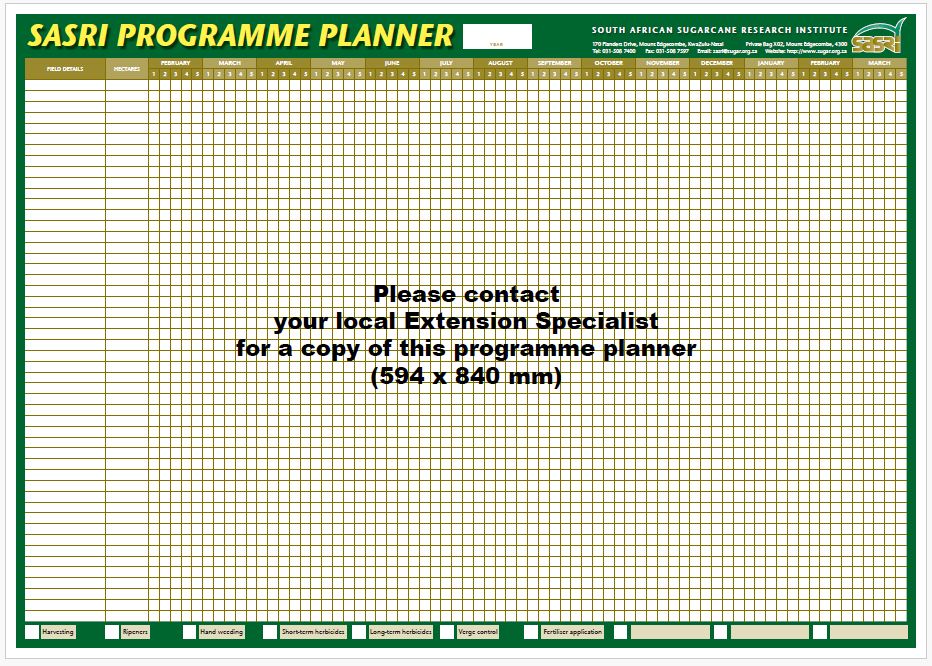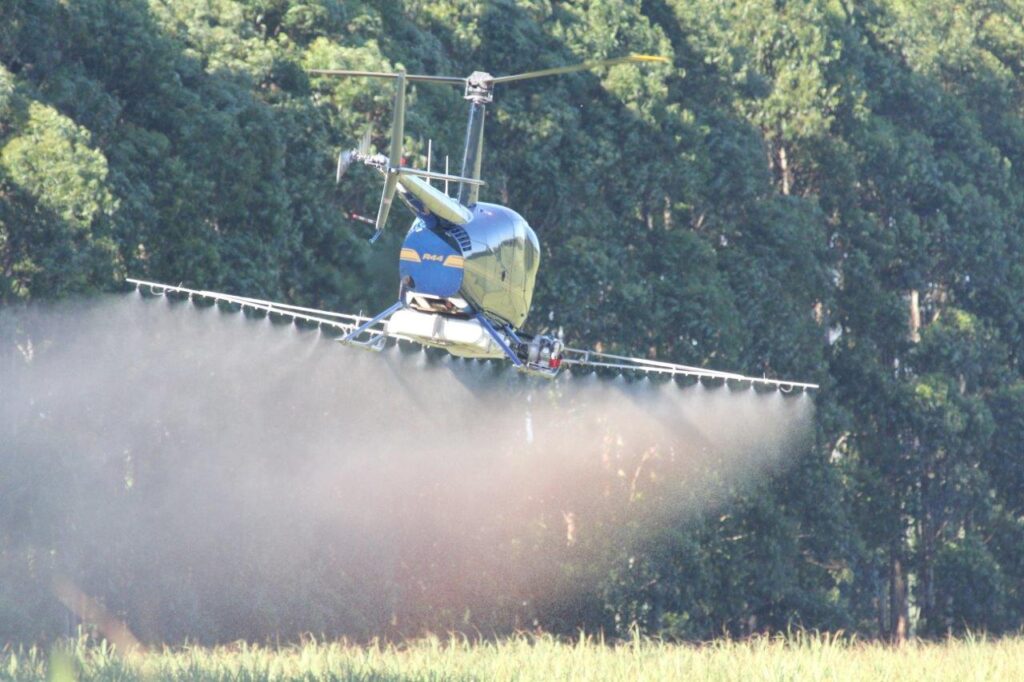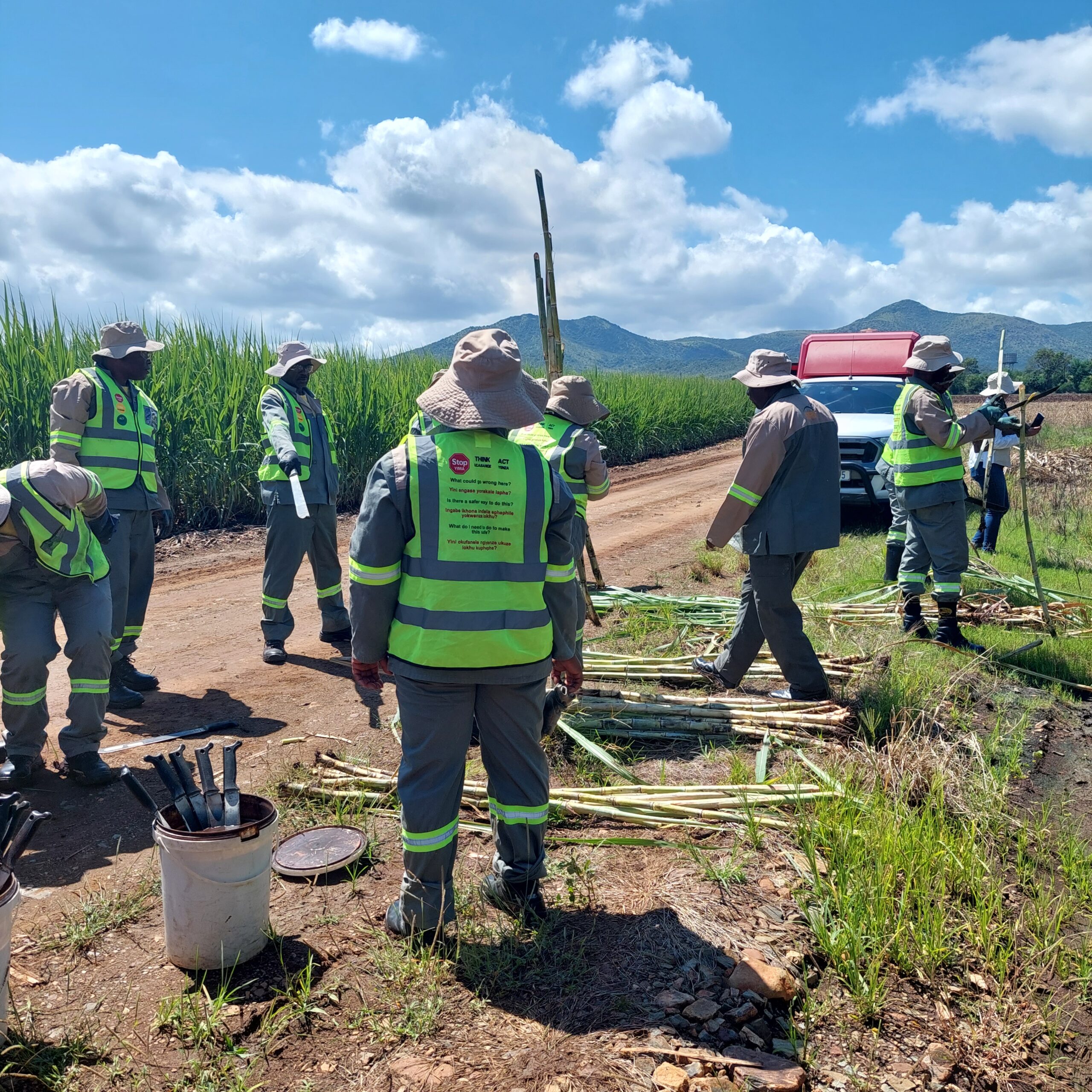Topical Tips
Welcome back to a busy new year! No doubt, weeds and disease roguing are foremost on many growers’ minds. With a large portion of the industry having received lower-than-average rainfall in November, and extended periods of high temperatures in December, heat stress may also be a concern for some. Below are a few things to remember during January and February.
Planning for the year ahead
- Programme planning is essential for efficient farming. Start planning now well before the new season begins. Prepare your harvesting and replant programmes.
- Ask your Extension Specialist for a blank programme planner, where you can fill in your annual field programme and have this displayed on your office wall.
- Keep your re-establishment programme in mind. Confirm that your seedcane requirements can be met and fields are being fallowed already, to ensure a clean replant field.
- Be sure to take full advantage of the courses offered by the Shukela Training Centre. Trained staff are more effective and efficient.

Heat stress
- Hot, dry weather raises concerns about heat stress.
- Avoid planting on excessively hot days, or applying herbicides when chemicals may be vapourised.
- Read the artilce “Heat stess in sugarcane” in this edition to find out more.
Pests & Diseases: Scouting and Roguing
- Although P&D teams will be inspecting your farms regularly, you don’t need to wait for them. Do your own pest or disease surveys. The best time is when your cane is at shoulder height. Your local P&D officer or technician will be able to provide guidance on how to conduct various surveys.
- Yellow sugarcane aphid (YSA). There was an explosion in the levels of YSA in some areas along the coast, and in irrigated areas in February 2024.
- There has been a lot of smut around. When staff are doing follow-up hand weeding, remember to rogue out any smut-infected stools that may have been missed the first time around. Smut whips first need to be cut off and then burnt or buried to prevent further spread of spores. Consider chemical roguing to save time and labour requirements.
- Eldana In February, start inspecting your carryover fields to see which are worst affected, and should therefore be harvested first at the start of the season.

Crop nutrition
- Soil samples can be taken at any time of year. Sample plough-out fields early so that fertiliser, lime and gypsum can be ordered in good time.
- Leaf samples are particularly useful to diagnose problems, for example if you have uneven growth or poor patches in your field. Take leaf samples at 4-7 months of age if growing conditions have been favourable. See Information sheet 7.15 in the Soils & Nutrition series for further info on leaf sampling.
Weed control
- In dryland areas in particular, January is one of the best months for crop growth. Make sure that the advantages are not lost due to weed competition.
- Spray field edges and verges to control creeping grass infiltration.
Ripening
- Consider chemical ripeners for fields to be harvested first in the season. Contact your Extension Specialist or spray consultant for advice.


